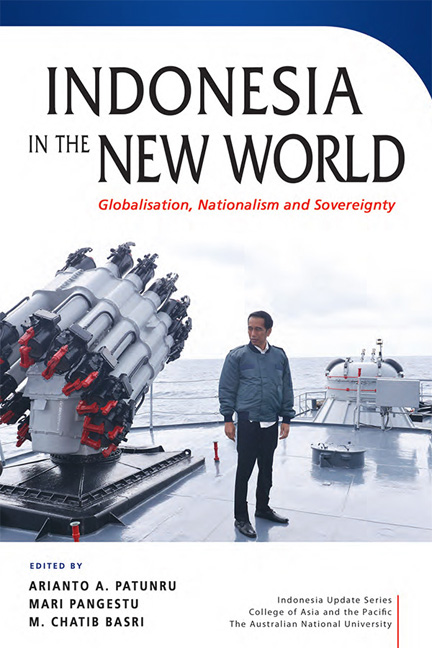Book contents
- Frontmatter
- Contents
- Tables
- Figures
- Contributor
- Acknowledgments
- Glossary
- 1 Challenges for Indonesia in the new world
- PART 1 Globalisation, Nationalism and Sovereignty: the Indonesian Experience
- PART 2 Nationalism in Practice
- PART 3 Impact of and Response to Globalisation
- 8 Anti-globalisation, poverty and inequality in Indonesia
- 9 Gender, labour markets and trade liberalisation in Indonesia
- 10 The good, the bad and the promise of globalisation: a private sector perspective
- PART 4 The Human Face of Globalisation
- PART 5 Navigating The New Globalisation
- Index
- INDONESIA UPDATE SERIES
8 - Anti-globalisation, poverty and inequality in Indonesia
from PART 3 - Impact of and Response to Globalisation
Published online by Cambridge University Press: 08 June 2019
- Frontmatter
- Contents
- Tables
- Figures
- Contributor
- Acknowledgments
- Glossary
- 1 Challenges for Indonesia in the new world
- PART 1 Globalisation, Nationalism and Sovereignty: the Indonesian Experience
- PART 2 Nationalism in Practice
- PART 3 Impact of and Response to Globalisation
- 8 Anti-globalisation, poverty and inequality in Indonesia
- 9 Gender, labour markets and trade liberalisation in Indonesia
- 10 The good, the bad and the promise of globalisation: a private sector perspective
- PART 4 The Human Face of Globalisation
- PART 5 Navigating The New Globalisation
- Index
- INDONESIA UPDATE SERIES
Summary
The 1997–98 Asian financial crisis was a turning point for Indonesia, as it was for many other East Asian countries. In addition to the economic consequences, Indonesia experienced dramatic political change, including a transition to electoral democracy and far-reaching government decen¬tralisation. In the post-crisis period, the average growth rate of real GDP per capita has been only marginally lower than during the two decades preceding the crisis, but the rate of poverty reduction has slowed signifi¬cantly. Something seems to have happened to make growth substantially less effective in reducing poverty. Simultaneously, Indonesia has experi¬enced a huge increase in measured economic inequality. The slowdown in the rate of poverty reduction per unit of growth and the increase in inequality can be viewed as quantitative aspects of the same distributional phenomenon, in which different segments of the population recovered from the crisis at widely divergent rates. What caused this to happen?
The present study marks the initial step in a research program in which the authors aim to explore competing hypotheses that might explain the change in the poverty–inequality nexus since the crisis. The hypothesis examined in this article relates to what we will call ‘anti-globalisation’: resistance to the increasing reliance on international trade that has been a characteristic of globalisation, with that resistance taking the form of tight¬ened restrictions on international trade. At the same time as inequality has increased in Indonesia, protectionism has also risen, both interna¬tionally and within Indonesia. We hypothesise that anti-globalisation has caused at least some of the slowdown in poverty reduction and increase in inequality. We will examine the extent to which the increase in protec¬tionism in the global economy, and within Indonesia itself, can explain the changes in economic outcomes experienced by different segments of the Indonesian population.
First, we discuss in more depth the slowdown in poverty reduction and increase in inequality experienced in Indonesia since the financial crisis. We then provide more detail on the rise of protectionism, both in the international economy and within Indonesia. Next, we describe the economic model used to analyse the effects of protectionism on poverty and inequality. Finally, we summarise the results.
- Type
- Chapter
- Information
- Indonesia in the New WorldGlobalisation, Nationalism and Sovereignty, pp. 133 - 156Publisher: ISEAS–Yusof Ishak InstitutePrint publication year: 2018

